Ryan Hall's Blog, page 303
January 8, 2016
9 Essential Tips for New Runners
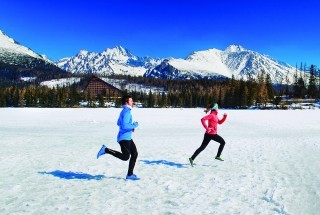
Photo: Istockphotos.com
Get your running habit started right with this time-tested advice.
1. Keep yourself accountable
Setting goals is a given, but sticking to them is another thing altogether. After setting your goal for the new year—completing a race, running three days a week or losing a certain amount of weight—tell people about it, either by confiding in another person or announcing it on social media.
2. Get some good gear
Running’s start-up costs are minimal, but a good pair of running shoes and functional apparel are worth the investment. Getting the right gear will not only solidify your commitment, it will also make running much more enjoyable.
3. Start a training log
Whether it’s a blank notebook where you can jot down the details of your workouts or phone apps like MapMyRun and RunKeeper, having a record of your training helps track your progress as a runner. Plus, it can keep you motivated to continue pursuing your goals.
4. Get outside
The first few months of the year can be challenging for many runners, but running outdoors can be more motivating than running in place on a treadmill—not that there’s anything wrong with that either! Seek new routes and vary your terrain to keep things fun, interesting and challenging.
5. Find a friend
If you’re scared to start a running program or are worried about staying committed to it, find one or two close friends to join you in your new pursuit. In addition to the accountability of meeting someone else for a run, going on a journey is exciting and rewarding when you can share it with others.
RELATED: Everything A New Runner Needs to Know to Get Started
6. Do more than just run
Do core strength work regularly and mix some cross-training into your workout routine by taking a spin class, going to boot camp or swimming. It will help lessen the likelihood of injury and make you a more well-rounded athlete.
7. Vary the pace and location of your runs
Only by running a variety of paces and types of runs will you see continued improvement in your fitness. And mixing up your runs between roads, trails and the track will keep you inspired.
8. Reward yourself
Whether it’s treating yourself to coffee and a treat after your workout or planning a vacation around a race, complement your running goals with something to look forward to in addition to your run.
9. Remember: It’s a process
It’s easy to get frustrated in the early stages of a running program. Every runner experiences highs and lows along the way. However, remind yourself to enjoy the process of discovering what you can do every time you lace up your running shoes.
RELATED: 8 Ways to Make 2016 Your Best Year of Training
The post 9 Essential Tips for New Runners appeared first on Competitor.com.
Running Tech Buzz: Garmin Forerunner 630
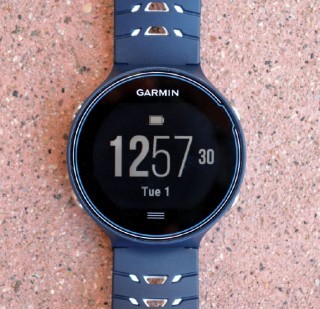
Photo: Adam Elder
Garmin’s new 630 is the same size as the 620 but is said to have 60 percent more battery life and 44 percent more viewable screen area. It’s also lighter and thinner than its competitors. This is an all-day watch connected to your phone with well-executed smart notifications, music control, and sleep and activity tracking. The buttons/touchscreen combination works well even with wet, shaky fingers. Run physiology now includes a lactate threshold (LT) test, a stress score app and predicted race times (eerily accurate with minimal data). Run Dynamics from the heart rate strap’s sensors now includes stride length and ground contact left-right balance.
Breakdown
Customizable and Expandable
Garmin’s IQ Connect includes downloadable watch faces, data fields, finish estimators, apps for sports such as cycling, weather and other widgets.
Run Dynamics
We were most intrigued by the clear differences in right-left ground contact balance and contact time between shoe models.
So Many Options, So Much Data
The 630 is friendly. However, having the ability to configure workout data fields via the app would be more helpful—along with reliable wireless synching.
RELATED: Running Tech Buzz: Timex Ironman One GPS+
The post Running Tech Buzz: Garmin Forerunner 630 appeared first on Competitor.com.
Shoe Talk: New Balance Fresh Foam 1080
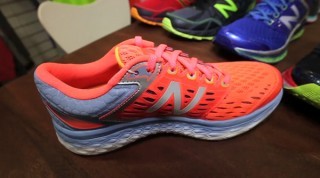
The newest addition to New Balance’s acclaimed Fresh Foam line is the 1080. Here’s a closer look at what the shoe offers.
RELATED: Shoe Talk: Brooks PureFlow 5
The post Shoe Talk: New Balance Fresh Foam 1080 appeared first on Competitor.com.
January 7, 2016
Out There: No Shortcuts
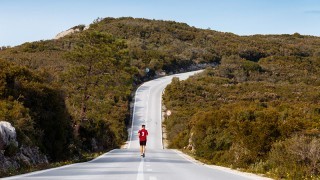
Photo: Shutterstock.com
Since moving to Utah last year, I’ve taken up a new hobby of honing my BS detector.
You see, my new state is a bizarre epicenter of multi-level marketing schemes, many of which center around health and wellness. Feeling tired? My friend’s sister sells an all-natural supplement for that. Need to lose weight? I know six people on Facebook who sell various versions of magic nutrition shakes. Want to find the Fountain of Youth? It’s probably on display at my neighbor’s next gathering, where I can nosh on free cookies while learning about the latest release of RejuviWonderWow (now with extra-nourishing Vitamin XYZ!)
“This will change your life!” they all exclaim.
Every now and then, my husband will come home from work with yet another handout about the latest product to unlock the secrets of everlasting health.
“The guys want to know your take on this one,” he says as he rolls his eyes. Because I have a doctoral degree in a health field, Neil’s coworkers frequently send me details on the latest product to short-track their health and fitness goals, wondering if it will pass muster.
I’ve yet to find one that does.
Instead, what I find is that most of these fat-burning, muscle-building, age-defying wonders make a lot of assertions with very little science. No clinical studies are performed. FDA approval is nonexistent. Ingredient lists tout “proprietary blends” that could be legit elements, or they could be nothing more than ground-up houseplants (this has happened). Half-assed, biased surveys draw vague conclusions that can be massaged into claims of effectiveness:
“Burn calories without exercising!”
“Gain muscle mass in just three days!”
“Reverse the signs of aging and train like you’re 20 again!”
“Look at these before and after pictures! She is LITERALLY a whole new person!” (Literally! Look at the pictures. She transformed from your grandmother to Gisele Bundchen!)
It’s not just supplements and powders, of course. At my gym this week, I saw a woman wearing a wide belt. Thinking it was some sort of supportive weightlifting gear, I inquired about it. She said she sold them (of course!), but it wasn’t a weightlifting belt—it was a corset to “train” her waist to be smaller. Apparently, if diet and exercise isn’t your bag, you can just squish your internal organs until they take a more appealing shape.
“Would you like to try it out?” she offered. At least, I think that’s what she said—I couldn’t hear her over the klaxon of my BS detector.
It’s easy to assume this phenomenon is confined to my state, but miracles are sold all over the world. What’s more, people are buying ‘em on every street corner. This isn’t a Utah problem, it’s a dumb people problem.
Look, I get it—the idea of a magic potion is appealing. If most of us could lose weight with a magic powder to sprinkle on our hot fudge sundaes, we would. Turning back the clock with a capsule sounds phenomenal. I love running, but if I had the option of taking a cardio-replicating supplement instead of slogging through wet, heavy snow tomorrow morning, I’d pop the pill and enjoy my warm bed.
Except no such pill actually exists. We’re looking for a quick fix where there is none. If these were valid products, we’d currently be living in a world free of disease, obesity, and crow’s feet. Everyone would have the ability to spontaneously run a marathon, and pizza would finally be an acceptable breakfast food.
But here’s what does work: You get out of bed every morning and you do the workout. You eat the vegetables. You drink the water. You go to bed at a decent time, and you wake up and do it all over again. Most importantly, you stop spending your money on BS.
It’s not fast, and it certainly isn’t easy, but it’s proven. That’s more than those capsules can say.
There is no magic pill. There is no secret potion. There’s just you and the effort you’re willing to put in.
You want to change your life? Better get to work.
***
About The Author:
Susan Lacke does 5Ks, Ironman Triathlons and everything in between to justify her love for cupcakes (yes, she eats that many). Susan lives and trains in Salt Lake City, Utah with three animals: A labrador, a cattle dog, and a freakishly tall triathlete husband. She claims to be of sound mind, though this has yet to be substantiated by a medical expert. Follow her on Twitter: @SusanLacke.
The post Out There: No Shortcuts appeared first on Competitor.com.
Video: Rob Krar Shares His Love of the Grand Canyon

Photo: Ian Shive / TandemStock.com
As part of the Sierra Club’s efforts to designate the Grand Canyon watershed as a federally protected national monument, ultrarunner Rob Krar and his wife Christina Bauer starred in a 4-minute film about their lives, their running and how it all intertwines with the Grand Canyon and its surrounding land.
The proposed Greater Grand Canyon Heritage National Monument would protect 1.7 million acres of land surrounding Grand Canyon National Park in Arizona.
The post Video: Rob Krar Shares His Love of the Grand Canyon appeared first on Competitor.com.
RunDisney Releases New Rules for Costumed Participants
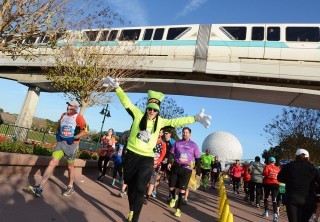
Photo courtesy of RunDisney.
Just days before runDisney’s first event of the year, the Walt Disney World Marathon on Jan. 10, officials released a new set of costume safety guidelines. Runners will still be able to don their favorite Disney character outfit for the race, but certain restrictions may require some slight costume adjustments.
Last month, the Disney theme parks increased their security measures for park guests as well, adding metal detectors and prohibiting guests 14 and older from wearing costumes. With more than 100,000 runners and spectators combined expected to attend the popular race weekend at the Magic Kingdom, these rules could help regulate the chaos of mass Disney crowds.
A few key rules listed in the runDisney Blog posted on Jan. 4 include:
Runners who dress like Disney characters may not pose for photos or sign autographs for guests.
Costumes may not include anything that resembles a weapon or could easily be mistaken for one.
Runners cannot wear masks of any kind, lengthy Jedi robes or superhero capes, and costumes that may drag (Princess dresses) or conceal a weapon.
Runners 14 and older must change out of their costumes after the race if they plan on re-entering the park.
Lastly, selfie sticks are prohibited on the course (as well as baby strollers, joggers, skateboards, backpacks, etc.).
RunDisney officials stress that failure to follow these guidelines will result in refused entry into the park and race. So dress accordingly!
The post RunDisney Releases New Rules for Costumed Participants appeared first on Competitor.com.
Maximize Your Metabolism To Keep Your Weight-Loss Goals On Track

Photo: Shutterstock.com
Okay, so you resolved to lose weight. You reduced your calories. You added a few miles of walking or running to your daily to-do list. And what was the result? That’s right, you didn’t lose an ounce. Or maybe gained a pound. Or two. What’s up with that?
What’s up is that you probably miscalculated the unique and fickle calorie requirements of your metabolism. Your metabolism includes all the processes through which your body uses food to create energy and maintain bodily functions, and it accounts for the majority of calories you burn in a day. Metabolisms are also like snowflakes—no two are alike.
RELATED: Is Running Good for Weight Loss?
On the surface, losing weight should be easy. There are 3,500 calories in a pound of body fat, so losing a pound requires eating 3,500 calories less than you expend. That forces your body to get that energy from stored fat. Simple, right? Except that subtracting 3,500 calories from your diet requires that you first know how many calories you’re consuming to maintain your current weight. In other words, you have to know what number to subtract those 3,500 calories from. To calculate this, you need to consider three factors:
Your body weight
Your calorie expenditure during exercise
Your basal metabolic rate, or the amount of calories expended by your metabolism to keep your body functioning while at rest.
Determining the first two factors is a cinch. For body weight, all you need is a bathroom scale. And for estimating calorie burn during exercise, you can use the Competitor online calculator. But calculating your metabolic calorie expenditure, well, that one’s tricky.
Your metabolism doesn’t have a generic, single setting. Two people with the exact same body weight can have completely different metabolic rates. That’s because your metabolism is affected by all sorts of factors, including muscle mass, age, gender, dietary deficiencies, genetics and body size, as well as by environmental factors such as hot and cold weather. There are formulas for determining your resting metabolic rate (e.g., the Mifflin-St. Jeor equation, which multiplies your weight in kilograms by your height in centimeters by your age in years, to which you add 5 if you’re a man and subtract 161 if you’re a woman). But as complicated as these formulas can be, they’re still only this: good guesses. What’s more, your metabolism is significantly affected by three additional factors that are intrinsic to any weight-loss plan:
Calorie Restriction
Studies show that dieting itself lowers metabolism. A 1991 study published in the American Journal of Clinical Nutrition found that just three weeks of a restricted-calorie diet lowered metabolism to 82 percent of normal. And a 2000 study determined that lowered metabolism from dieting could be at least semi-permanent. Eight subjects were confined to a biosphere for two years, during which they lived on a restricted-calorie diet. Six months after returning to a normal diet, the subjects still had reduced metabolisms. In other words, feeding your body less causes your body to burn fewer calories, and this is an outcome that can continue long after your diet has been abandoned.
Weight Loss
I know, it isn’t fair, but weight loss will lead to a lower metabolism. It makes sense when you think about it. When there’s less of you to maintain, you’ll need fewer calories to do it.
Exercise
This is the good factor, the one that can partially (or wholly) offset the previous two. When you exercise, you increase your metabolism post-exercise by creating an “afterburn”—a period of time during which your metabolic calorie usage rises even though you are no longer exercising. If you engage in high-intensity exercise, such as weightlifting or interval training, the afterburn will be greater than that for aerobic exercise alone.
If all this has your head spinning, if you still have no idea how many calories you should eat and feel like maybe it’s time to grab a slice of comfort pizza and delay the diet until another time, relax. There are plenty of tools on the internet to help you get a ballpark figure for your daily calorie burn.
First, use an online calculator to estimate your metabolism’s daily caloric needs, based upon height, weight, age, and sex. Both of these calculators will do the trick:
My Fitness Pal
Bodybuilding.com
Next, add the calories you expend working out, using this calculator to determine your exercise-induced calorie burn:
Competitor Calorie Burn Calculator
Once you know how many calories you require to maintain your current weight, you’ll need to adjust that total downward in order to lose weight. A reduction of 500 to 1,000 calories a day should lead to a healthy 1-2 pounds of weight loss per week. If you don’t see weight loss by the third or fourth week, you’ll need to adjust your calorie intake downward a little more until you do.
If you prefer to let an online tool calculate your daily calorie reduction, try the Body Weight Planner (BWP) provided by the National Institutes of Health. The BWP first calculates your metabolic rate and daily activity level. It then determines the calories needed to maintain your current weight and the calorie reduction required to reach your goal weight. Better still, you can input the exact date you want to reach your target weight, and the BWP will adjust your daily calorie total to reflect that goal.
RELATED: 5 Keys To Athletic Weight Loss
Finally, don’t panic if you don’t see weight loss for the first couple weeks. If you’ve started a new exercise program in conjunction with your diet, your body will increase muscle glycogen stores (i.e., the energy supply in your muscles), which can add between 1-4 pounds to your weight (a combination of the stored glycogen and accompanying water weight gain). Also, according to “set point” theory, your body might attempt to maintain its current weight by temporarily lowering your metabolism, thereby offsetting any calorie reduction. In this staring contest with your body, you’ll need to practice patience. Eventually, faced with a combination of calorie restriction and exercise, your metabolism will blink, and you’ll be on your way to your weight loss goal.
****
About The Author:
Pete Magill, five-time USA Masters Cross Country Runner of the Year, is the fastest-ever American distance runner over age 50 in the 5K and 10K. He is the lead author of Build Your Running Body and author of The Born Again Runner (Spring, 2016).
The post Maximize Your Metabolism To Keep Your Weight-Loss Goals On Track appeared first on Competitor.com.
Snowshoe Running 101: Expert Advice And Beginner Workouts
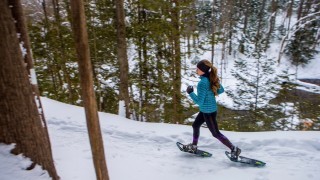
Snowshoe running is a fun off-season alternative to logging indoor miles on the treadmill. Photo: Shutterstock.com
Let’s face it: January, February and even March can be some of the toughest months for distance runners. If you’re living in areas where temperatures dip below freezing, the once-pristine roads and trails become cold, blustery nightmares to negotiate—places where the fun-factor is low and the injury potential high. Most of us turn to the treadmill to log our winter miles, but before heading to the gym, consider a better alternative: snowshoe running.
Dr. Heather North of Red Hammer Rehab in Louisville, Colo., is a huge proponent of the sport for her runners. “Snowshoe training is beneficial from the standpoint of working the lungs without stressing the body,” she says. “The lungs are worked since snowshoeing typically involves inclines and exercising at altitude.” North points out that the fact that you are exercising on soft snow as opposed to hard roads is a great way to recover from a high-mileage fall. “You get a workout for the ‘engine’ without taking the ‘vehicle’ itself,” she says. “In other words, you keep your fitness, but allow the body not to be damaged.”
RELATED: Snowshoe Racing 101
An added bonus of snowshoe running is that the muscles you’re working are the ones that can help you become more resistant to injury when you return to the roads. Nikki Kimball, a three-time U.S. snowshoe champion, points out that the hips and ankles get a good workout when trudging through soft or deep snow. “The athlete must draw on muscles used to stabilize the lower extremity—those surrounding the hip and ankle—to compensate the resistance of the snow and the uneven landing surface it provides,” she says. “Strengthening stabilizing structures is critical to injury prevention, and snowshoe running targets some of the most common areas of weakness.”
If you’ve never dabbled in snowshoe running before, take note of these important tips to enjoy a great first experience:
1. Fear not. The physical act of snowshoe running doesn’t require any special skills. Kimball says that if you can run, you can snowshoe. The only transition that runners will experience is when it comes to hill climbing—it’s OK to walk up hills that you’d normally be able to summit easily if they weren’t packed with snow. “Mind your heart rate, not the speed you think you should be going,” Kimball says.
2. Rent first. Eric Narcisi, an accomplished snowshoe racer and top-five finisher at the 2014 Granite State Snowshoe Championships says that many races will let you rent snowshoes to try them out. “I highly recommend borrowing or renting some if you can at first since snowshoes can be pretty expensive,” he suggests.
3. Dress for success. What you wear (or don’t wear) can make a big difference out on the snow. As with all things in winter, layering is key. Start out feeling a bit cold as you will generate a lot of body heat once you start going. Pay particular attention to your choice of socks. Kimball recommends neoprene or even covering your normal socks with plastic bags to keep them dry. Also, consider wearing waterproof pants as your trunk and legs will get hit with a lot of kicked up snow along the way.
The post Snowshoe Running 101: Expert Advice And Beginner Workouts appeared first on Competitor.com.
First Look: Under Armour SpeedForm Gemini 2 Record Equipped
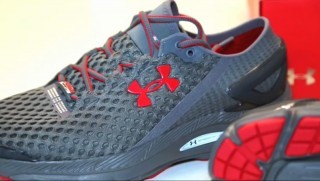
UnderArmour has entered the growing high-tech shoe business, announcing the launch of the SpeedForm 2 Gemini Record Equipped. The shoe, embedded with a sensing chip, tracks a plethora of data in real time while tethered to a watch or phone or it can be used device-free. The data is automatically synched to the Under Armour Record app. The neutral-oriented Gemini 2 Record Equipped has a 10mm heel-toe offset and weighs about 10.4 oz. (for a men’s size 9.0) and carries a $150 price tag (about $20 more than the standard Gemini 2). This video takes a closer look at the shoe, which is set for a Feb. 29, 2016 release.
RELATED: First Look: Altra IQ, the High-Tech Shoe
The post First Look: Under Armour SpeedForm Gemini 2 Record Equipped appeared first on Competitor.com.
January 6, 2016
How Far Do Athletes Run in Different Sports?

Photo: Shutterstock.com
The beauty of running is that, to some degree, it’s an important component of almost every popular sport out there. But to what extent?
Once left to speculation, technology and data has enabled us to have a clearer understanding of how much athletes run in other sports. While you’re unlikely to beat a marathoner in the amount of ground covered during a competition, a few ball sports do feature plenty of running to go along with their other demands.
Here’s a closer look at the amount of miles that athletes in other sports cover in competition:
Soccer
Soccer is a sport that requires a good amount of endurance, especially for midfielders who are constantly moving across the expansive pitch.
FIFA kept track of the amount of miles players covered during the 2014 World Cup. As one sample, during the U.S. game against Ghana, midfielder Michael Bradley logged 7.9 miles to lead all Americans. All of the U.S. midfielders ran at least 7 miles in the 90-minute game, while the starting defenders and forwards all exceeded 6 miles.
Another interesting note? Soccer referees probably run even more than the players.
Basketball
The NBA keeps close track of all sorts of statistics, including how much a player runs in the course of a game.
If your favorite NBA player is determined by who runs the most, then consider yourself a big fan of the Chicago Bulls’ Jimmy Butler. He leads all NBA players, running an average of 2.72 miles per game in the 2015-16 season. He led all NBA players in 2014-15 as well, and was second to Chandler Parsons in 2013-14.
NBA superstar Steph Curry of Golden State ran more than anyone during last year’s NBA Playoffs, covering the equivalent of two marathons in 21 postseason games. Instead of a race medal, though, he got a pretty nice ring.
Football
Obviously, how much a football player runs depends largely on the position being played. The most active are wide receivers and cornerbacks, who are constantly running downfield even if they aren’t touching the ball. However, Gizmodo reported in 2013 that those position players only run about 1.25 miles per game.
Tennis
A lot of factors go into how far a professional tennis player runs in a match—mainly, their playing style and how many sets a match goes. They’re also constrained on a relatively small court, which limits the amount of distance they need to cover.
For one example, let’s look at the men’s final at the 2015 U.S. Open, which Novac Djokovic won over Roger Federer in four sets (6-4, 5-7, 6-4, 6-4). Both players ran a similar amount in the match—just more than 2 miles. Of course, in Djokovic’s three-set win in the semifinals just a few days earlier, he didn’t even log a full mile of running.
Regardless, a few tennis players have proven more than capable of running long distances. Caroline Wozniacki, one of the top women’s tennis players in the world, ran the New York City Marathon in 2014 in a time of 3:26. Retired tennis player James Blake ran the New York City Marathon last year, finishing in 3:51.
But 26.2 miles is a different ballgame for any athlete, no matter how much their sport has them moving.
“I had fun,” Blake said after finishing New York City, “but will leave this to the professionals.”
The post How Far Do Athletes Run in Different Sports? appeared first on Competitor.com.
Ryan Hall's Blog
- Ryan Hall's profile
- 21 followers



